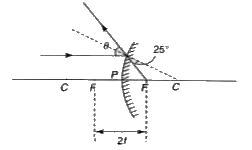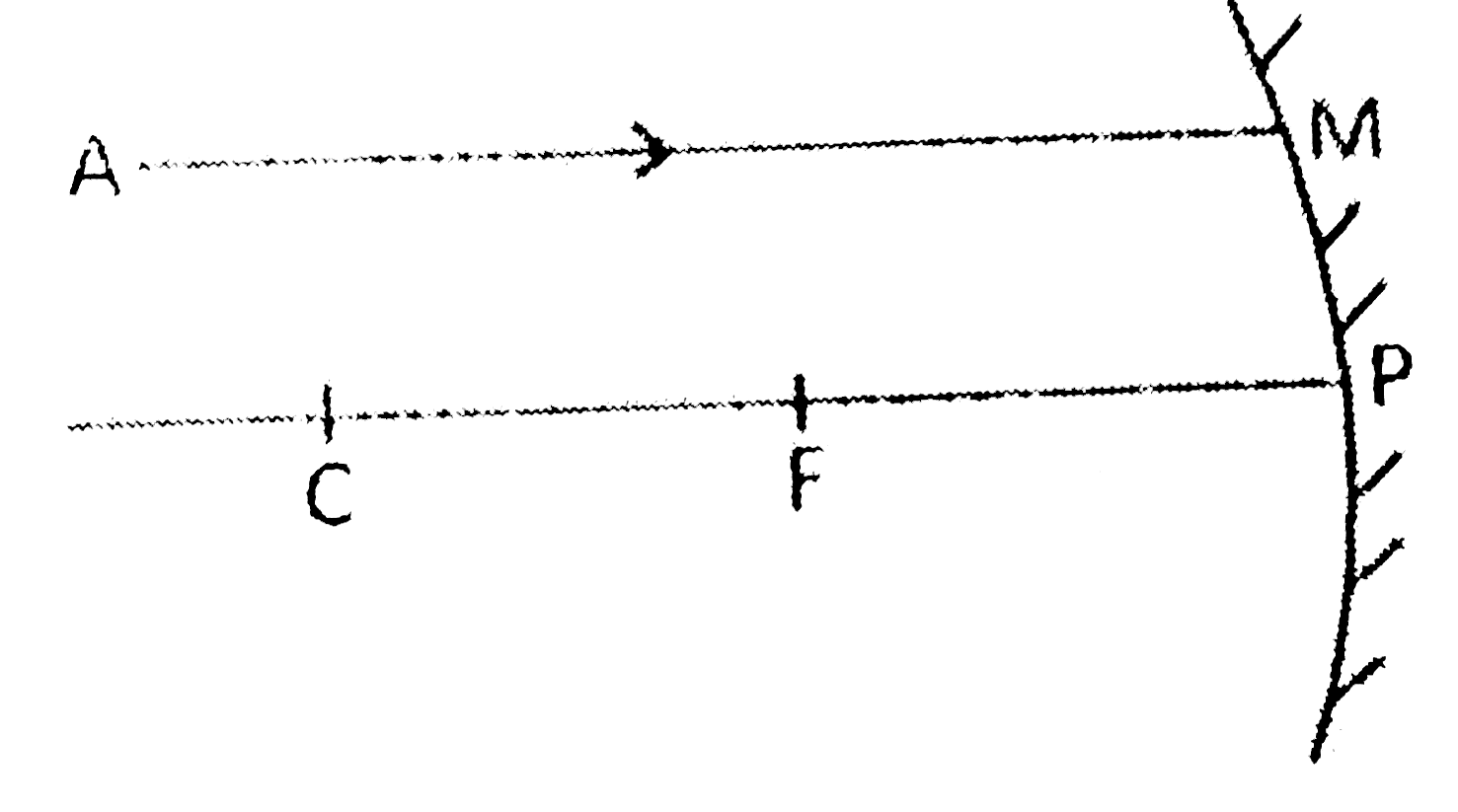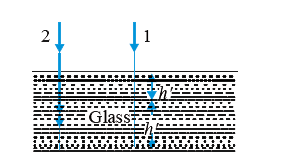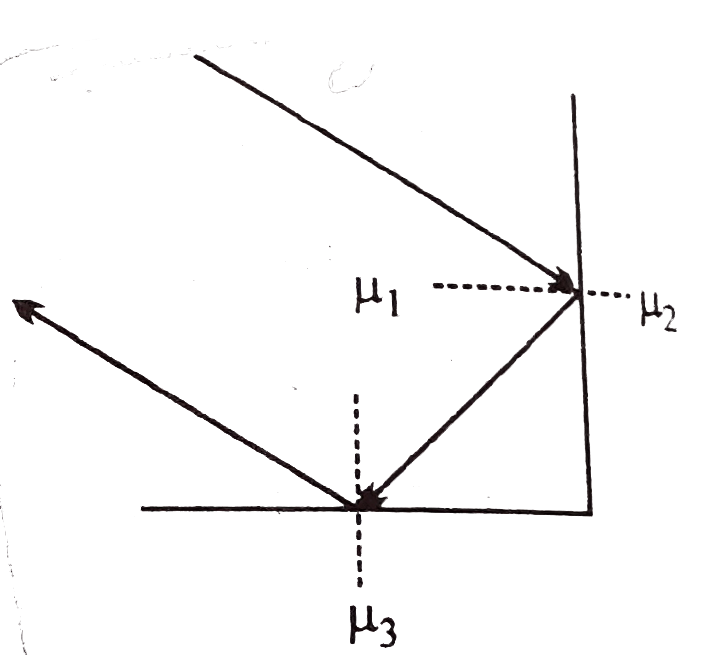The angle of reflection in the following ray diagram ?

25∘
12.5∘
50∘
none of these
The correct Answer is:A
Angle of incidence = Angle of reflection = 25∘
Topper's Solved these Questions
- BOOK - MCGROW HILL PUBLICATIONCHAPTER - REFLECTION OF LIGHT EXERCISE - HIGHER ORDER THINKING QUESTIONS10videos
REFLECTION OF LIGHT
- BOOK - MCGROW HILL PUBLICATIONCHAPTER - MOTIONEXERCISE - HIGHER ORDER THINKING QUESTIONS48videos
MOTION
- BOOK - MCGROW HILL PUBLICATIONCHAPTER - REFRACTION OF LIGHTEXERCISE - HIGHER ORDER THINKING QUESTIONS37videos
REFRACTION OF LIGHT
Similar Questions
A ray of light AM is incident on a spherical mirror as shown in the diagram.

Redraw the diagram on the answer sheet and show the path of reflected ray. Also indicate and mark the angle of reflection in the diagram.View SolutionDraw the path of light ray passing through a prism. Label angle of incidence and angle of deviation in the ray diagram.
View Solution
Knowledge Check
- Question 1 - Select One
A ray of light is incident at an angle i from denser to rare medium. The reflected and the refracted rays are mutually perpendicular. The angle of reflection and the angle of refraction are respectively r and r'. Then the critical angle will be:
 Asin−1(sinr)Bsin−1(sinr')Csin−1(tani)Dtan−1(sini)
Asin−1(sinr)Bsin−1(sinr')Csin−1(tani)Dtan−1(sini) - Question 2 - Select One

A ray of light from a denser medium strike a rarer medium at an angle of incidence I (see Fig). The reflected and refracted rays make as angle of 90degrees with each other. The angles of reflection and refraction are r and r The critical angle isAsin−1(tanr)Bsin−1(tani)Csin−1(tanr′)Dtan−1(sini) - Question 3 - Select One
In the diagram shown a ray of light is incidetn on the interface between1&2at angle slightly greater than critical angle.The light suffers total internal reflections at this surface .After that the light ray falls at the interface at this interface .After that the light ray falls at the interface reflection..Which of the following relations should hold true?
 Aμ1<μ2<μ3Bμ21−μ22<μ23Cμ21−μ32<μ22Dμ21+μ22<μ23
Aμ1<μ2<μ3Bμ21−μ22<μ23Cμ21−μ32<μ22Dμ21+μ22<μ23
If a ray of light incident on an opaque surface makes an angle of 30∘ with the mirror, what will be the angle of reflection of its corresponding reflected ray?
View SolutionWhat are the laws of reflection?
(i) The angle of incidence is equal to the angle of reflection, and
(ii) The incident ray, the normal to the mirror at the point of incidence and the reflected ray, all lie in the same plane.
(iii) Incident ray is equal to emergent ray.
(iv) Reflected ray is equal to emergent ray.View SolutionA ray of light from a denser medium strikes a rarer medium at an angle of incidenc i. The reflected and refracted rays make an angle of π/2 with each other. If the angles of reflection and refraction are r and r′ , then the criticall angle will be
View SolutionA ray of light is incident on a plane mirror, making an angle 'q' with the surface of the mirror. Arrange the following steps in sequential order to calculate the angle between the incident light ray and the reflected light ray.
(A) Draw a normal line on the plane mirror at the point of incidence of the light ray.
(B) Note down the angle between the plane mirror and the incident light ray.
(C) The sum of the angle of incidence and the angle between the plane mirror and the incident ray is 90∘.Determine the angle of incidence.
(D) From the laws of reflection, the angle of incidence is equal to the angle of reflection. Then the sum of the angle of incidence and the angle of reflection gives the angle between the incident light ray and the reflected light ray.View SolutionA ray of light is incident on a plane mirror, making an angle 'q' with the surface of the mirror. Arrange the following steps in sequential order to calculate the angle between the incident light ray and the reflected light ray.
(A) Draw a normal line on the plane mirror at the point of incidence of the light ray.
(B) Note down the angle between the plane mirror and the incident light ray.
(C) The sum of the angle of incidence and the angle between the plane mirror and the incident ray is 90∘.Determine the angle of incidence.
(D) From the laws of reflection, the angle of incidence is equal to the angle of reflection. Then the sum of the angle of incidence and the angle of reflection gives the angle between the incident light ray and the reflected light ray.View Solution

